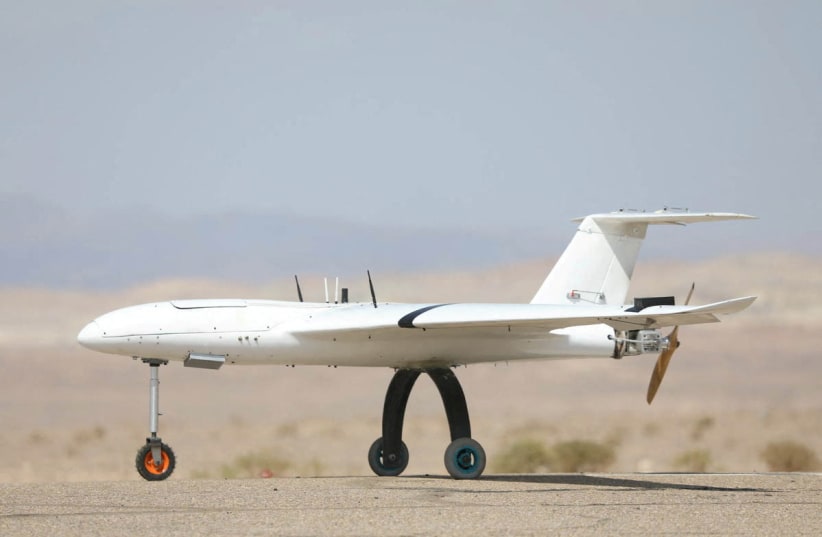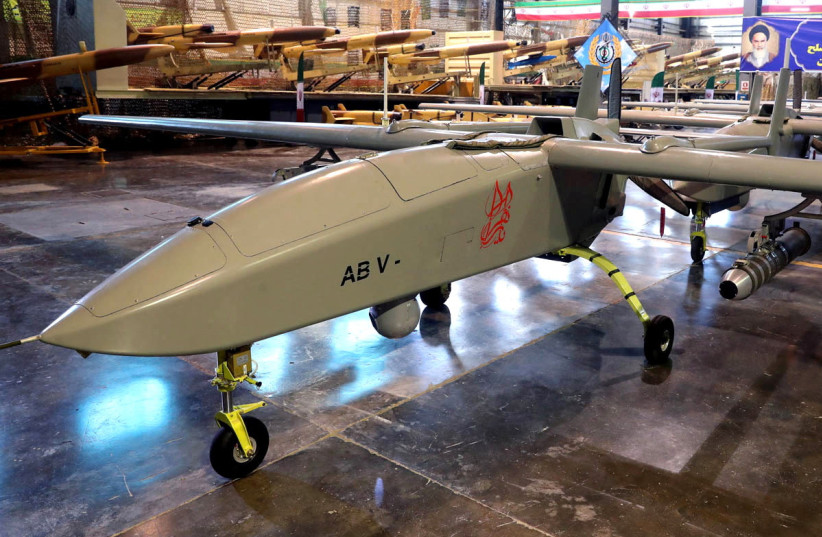The essence of these drones is that the drone itself is a warhead, so it flies into a target like a cruise missile.
SETH J. FRANTZMAN FEBRUARY 6, 2024 11:49
Updated: FEBRUARY 6, 2024 11:54

Iranian pro-government Tasnim News published an important and long article on February 6 detailing the history and extent of Iran’s kamikaze drone program. These are known as “one-way” attack drones, and Iran’s own media notes that they are sometimes called “suicide” drones. The essence of these drones is that the drone itself is a warhead, so it flies into a target like a cruise missile. Iran has been in the spotlight for exporting these dangerous weapons to Russia, the Houthis, Hezbollah, and militias in Iraq and Syria.
The Iranian drone program goes back many decades. It has often tried to copy US and Israeli models of drones or UAVs. In the past, Iran used these systems for surveillance. It also tried to arm them, similar to how the US armed the Predator drone with missiles. However, Iran has now shifted resources to invest in a long line of kamikaze drones because they are easy to build and export and because they can project Iran’s power for thousands of miles around the region. In essence, this is an instant air force. Iran is seeking to replicate what the Soviets did with the AK-47 by plowing resources into a weapon system that can be easily exported or replicated abroad.
The extent of the program
The article at Tasnim is interesting because it sheds some light on the extent of this program. It says that Iran’s defense industry has invested in numerous types of drones. It says they can often be hard to spot on radar, and the article praises them for their accomplishments. The article details past drone types of this kamikaze model, including the Chamran and Saegh, the Ababil line of drones that were provided in large numbers to the Iranian navy, as well as the Kian, Karar, Arash, Sayad, Miraj, and the new Sina and Bavar. The Sina is an attempt to copy the US switchblade.

Overall what is interesting in the article is the focus on the Shahed 136 and Shahed 131. The article includes, as a “source” for information on the Shahed, a copy of a Ukrainian report on the drones. The Shahed 136 was first sent to Yemen in 2020 before being exported to Russia for Moscow’s war in Ukraine. Iran’s media is apparently unable to get comments from officials about the export to Russia, so it is relying on Ukrainian claims. This is interesting. It shows how sensitive this issue still is. Nevertheless, Tasnim News is linked to the IRGC, so it is able to publish this material to brag about the program based on “foreign sources.” In essence, Iran’s media is bragging about the accomplishments of the Iranian drone program by discussing the fact they are being used by Russia by quoting the Ukrainian victims of the drones.
Iran’s drone program is complex. It consists of numerous companies and also drones that are provided to the IRGC and the IRGC navy, as well as to the regular army. As such there is likely internal competition in Iran among the various companies, some of them linked to the IRGC, to develop drones that are successful and which may be exported. The Shahed 136 has become the face of this program, and it has spread havoc around the region and in Ukraine. Other Iranian drones have also been exported to proxy groups such as Hezbollah and the Iran-backed Houthis. The drones pose a major threat to ships and also to facilities on the land. An Iranian-backed group in Iraq, for instance, used a drone to kill three American soldiers in Jordan on January 27.
Content retrieved from: https://www.jpost.com/middle-east/article-785385.